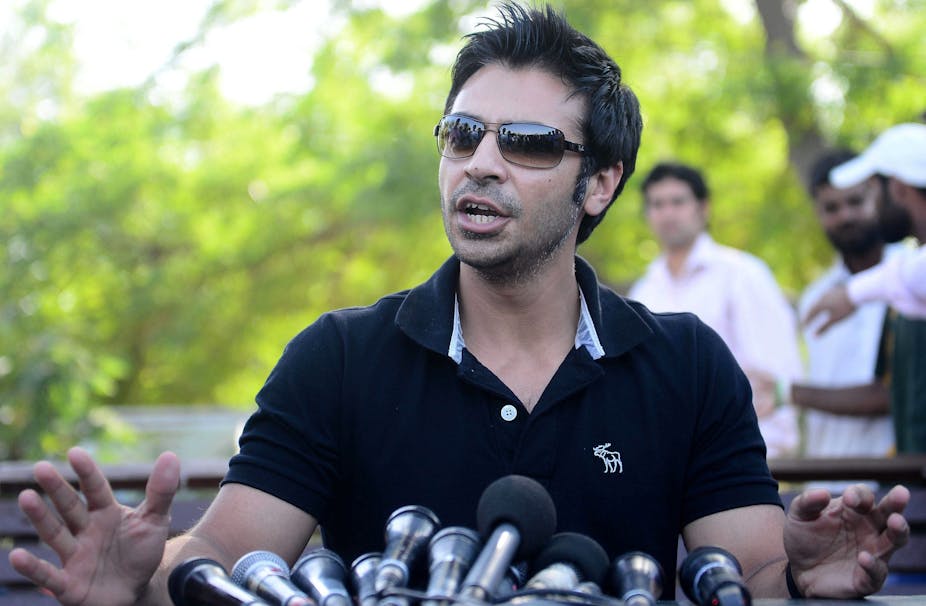Amidst crowded match schedules that are as much about finance as play, cricket’s off-field governance and probity problems have reappeared to raise further questions about its future.
News broke last week that former Kiwi cricketers Chris Cairns, Darryl Tuffey and Lou Vincent are being investigated for alleged match fixing. This is the latest match-fixing controversy in recent years. Pakistani international and English county players have been jailed as a result of match-fixing investigations, while others have suspended and/or pushed out of the game.
Given this problem persists more than a decade after the first major scandals erupted, the focus now swings back on cricket’s governing body. The International Cricket Council (ICC) seems powerless, unwilling – or both – to take authoritative action.
This charge appeared at precisely the same moment Transparency International (TI) became the most recent agency to demand better governance in global cricket. TI has an interest in sport, having called for improvements in governance and management in the notoriously corrupt and incompetent FIFA, the international soccer federation.
TI’s report on the ICC is brief, but seeks improved information delivery from the organisation. It is especially concerned by issues such as match fixing, better protection for whistleblowers, stronger public monitoring of management performance, removal of conflicts of interest and and more independent decision-making.
The report’s timing is significant. It is almost two years since the ICC released its own independent Woolf Report, which called for – among other recommendations – proper independent governance and a divide between the management of international and national cricket bodies.
Since that report appeared, the ICC has done almost nothing to implement its main recommendations that would ensure more independent management and governance, as opposed to the country-based representation that has been a constant within the ICC. During those two years, three specific incidents reveal why the reforms are needed, and why they are not being implemented.
First, when former ICC CEO Haroon Lorgat was appointed to run Cricket South Africa, the Board of Control for Cricket in India (BCCI) threatened to change its schedules with South Africa and, even more significantly, tear up financial arrangements and inflict substantial losses on South Africa. Lorgat had upset the BCCI while at the ICC, and this was payback. Put simply, Indian cricket authorities sought to interfere in and direct the affairs of another national cricket authority.
The BCCI also glossed over a major corruption issue involving its own president, wealthy industrialist N. Srinivasan, whose cement company owns the Chennai Super Kings in the lucrative Indian Premier League (IPL). Srinivasan’s son-in-law was the team’s operations manager and became directly involved in a serious betting scandal involving organised crime figures. Srinivasan had a clear conflict of interest and should have resigned. A whitewash internal inquiry cleared him and the courts allowed him to continue as BCCI president.
Finally, respected player advocate Tim May resigned as boss of the international players association after the BCCI interfered to remove him as a player’s representative on the ICC’s cricket committee. He was replaced by an Indian, Laxman Sivaramakrishnan. May and others are convinced that India persuaded several international captains to vote against May’s nomination even though they had initially backed him. This is a clear sign that governance and probity are major issues for the ICC.
These episodes constitute the unspecified backdrop to both the TI and Woolf reports. The central dilemma involves the power built up by India in internationlal cricket since the mid-1990s. Essentially, former BCCI and ICC boss Jagmohan Dalmiya won the right for India to stage the 1996 World Cup, secured massive television rights for the event, and transformed that into a strong lever over cricket’s traditional administrative heavyweights England, Australia and South Africa.
Dalmiya also created a power bloc for India within the ICC by championing the rights of the so-called “minnows”: non-Test match playing countries previously ignored by the heavyweights.

India now produces around 80% of total global cricket revenue. That power was extended by the rise of the IPL, which has also inflated player salaries, producing difficulties for other national cricket authorities. In short, India has taken a stranglehold on the game’s management.
There is no surprise, then, that the BCCI (controlled by the compromised Srinivasan) has flatly rejected the main recommendations of the Woolf Report, and will do the same with the Transparency International one. This control appears on-field as well. India alone will not support the use of advanced electronic technology to help inform umpires’ decisions in a game where the laws are notoriously intricate.
Though these reports are worthy, real progress will come only when the ICC finds both backbone and a way to take on India, as the International Olympic Committee (IOC) has over the way India runs its national federations. That also involves the BCCI because the IOC will not tolerate either politicians or convicted criminals holding sports federation offices.
If the ICC took on Srinivasan, for example, then the TI and Woolf reports might stand a chance of being implemented. Until that happens, the reports will remain important but ineffective.

